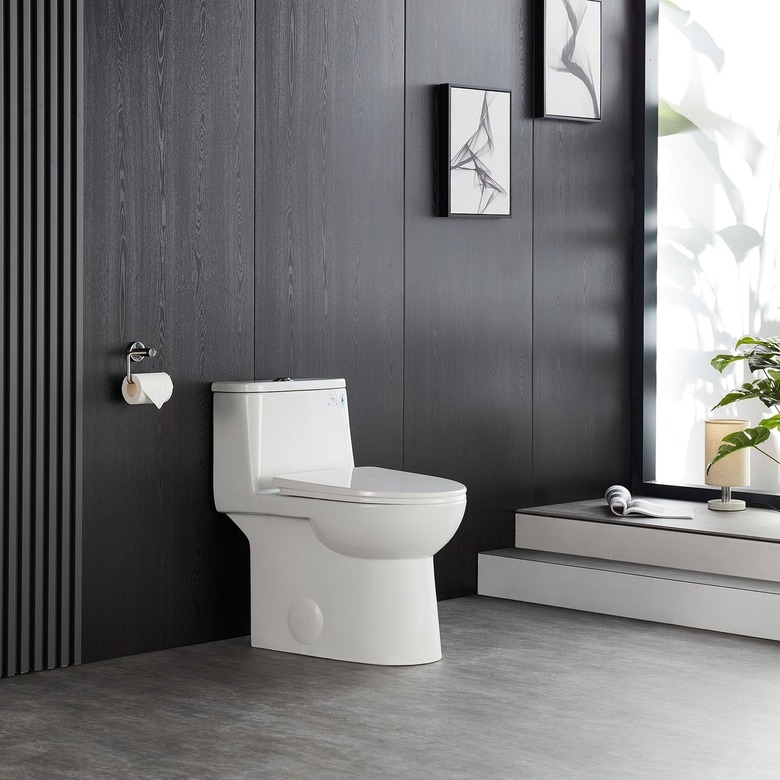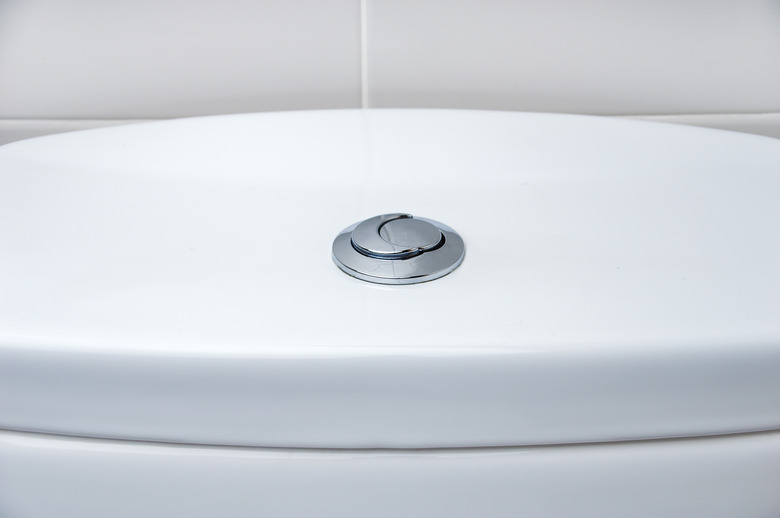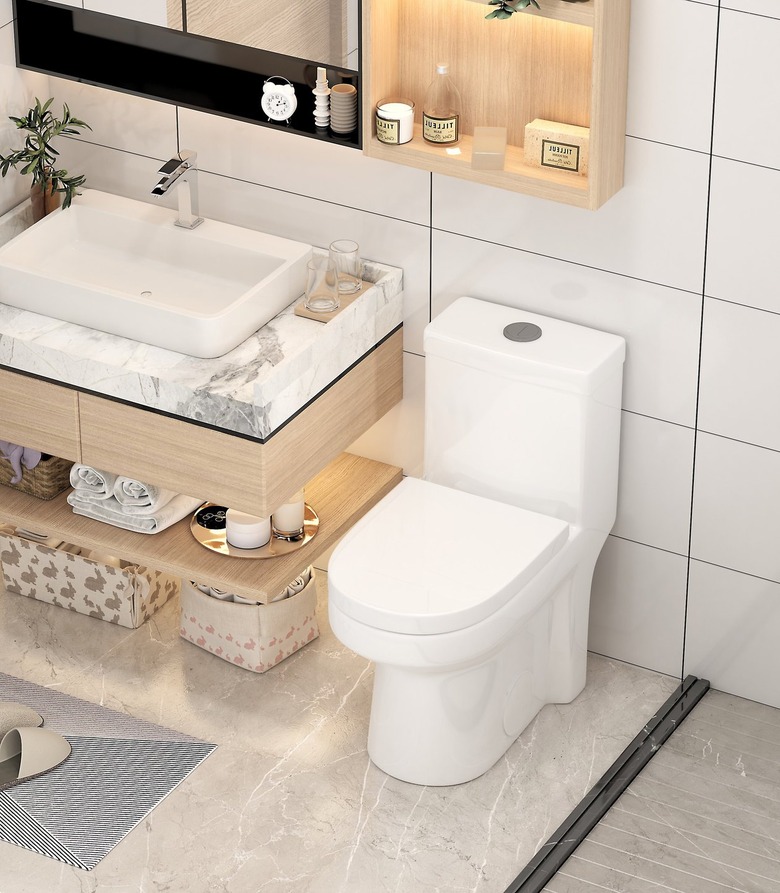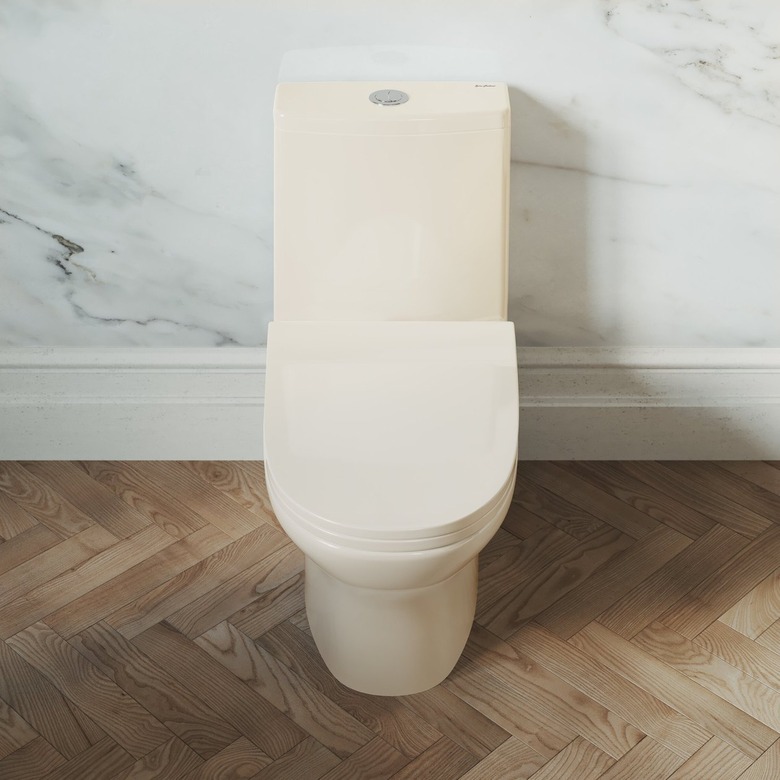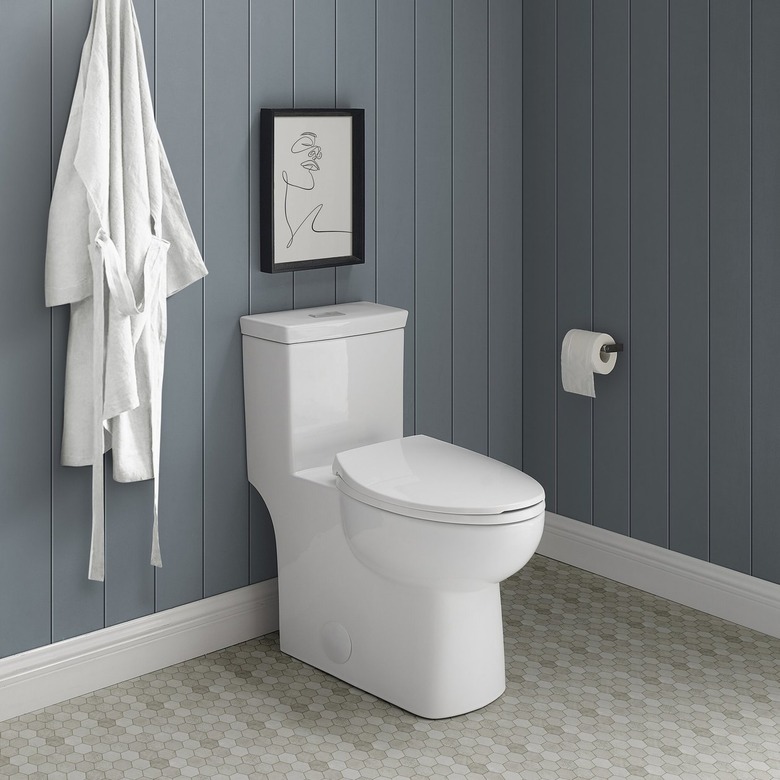Considering An Upgrade To A Dual-Flush Toilet? Here's What You Need To Know
We may receive a commission on purchases made from links.
Dual-flush toilets have been around for over 40 years and have only become more popular as the technology and efficiency of low-flow toilets has improved. These water-saving toilets have two flush settings: one for solid waste and one for liquid waste. Because liquid waste requires less water for a successful flush, this design saves water over traditional toilets that use the same amount of water regardless of what is being flushed. In fact, dual-flush toilets use as much as 67 percent less water than standard toilet models, which can translate to big savings on your water bill.
Thinking about upgrading your toilet to a dual flush? Here's everything you'll need to know before you buy.
How Does a Dual-Flush Toilet Work?
How Does a Dual-Flush Toilet Work?
Dual-flush toilets use a sophisticated mechanism that can deliver two different quantities of water into a toilet bowl when the toilet is flushed. Most dual-flush toilets feature flush buttons on the top. The smaller of the two push-button flushers activates the "half flush" option, meaning it releases only a portion of the water in the tank. The larger button activates the "full flush" option, meaning it releases all of the water in the tank. This is different from how a single-flush toilet works. A single-flush toilet always releases all of the water in the tank with every flush.
There are also dual-flush toilets that use traditional flush handles. The handle is usually lifted for a half flush and pushed down for a full flush, but this varies from model to model. In most cases, a dual-flush system will have some type of imagery on or near the flushing mechanism to indicate which option is for liquid waste and which is for solid.
Dual-Flush Toilet Savings
Dual-Flush Toilet Savings
We've all heard that dual-flush toilets can save us money, but exactly how much savings can we expect? To determine that figure, we first have to take a good look at how much average water usage there is with each flush — and how a dual-flush toilet can improve on that.
An average person will flush the toilet five times a day, and a family of four flushes 20 times a day. In fact, flushing toilets can account for up to 30 percent of a home's water usage. Older toilets can use as much as 7 gallons of water each time they flush, though the average is closer to 3.5 gallons per flush (GPF). This means an older toilet will use an average of 17.5 gallons but potentially as much as 35 gallons of water per person per day, meaning a family of four using these toilets could use an astounding 70 to 140 gallons of water per day.
The government standard for newer toilets is 1.6 GPF, which is a dramatic improvement over older models, with each person using an average of only 8 gallons of water per day or a family of four using 32 gallons. More efficient single-flush models that bear a WaterSense label from the Environmental Protection Agency use a maximum of 1.28 GPF, averaging 6.4 gallons of water per person per day or 25.6 gallons per family.
A dual-flush system will have two numbers listed for its GPF rating, with the first indicating the amount of water used to flush liquid waste and the second number showing how much water is used in a full flush. As an example, the most common rating for dual-flush toilets is 1.1/1.6 GPF, meaning the toilet uses 1.1 gallons when flushing liquid waste and 1.6 gallons when flushing solid waste. More efficient models with improved flush technology are rated 0.8/1.28 GPF.
Assuming each person flushes solid waste once a day and liquid waste four times a day on average, this means a standard dual-flush toilet will use 6 gallons per person per day, and a particularly efficient model can use only 4.48 gallons per person per day. This means a dual-flush system used by a family of four will use an average of 17.92 to 24 gallons of water per day.
If you're wondering how the reduced water usage from a dual-flush toilet could impact your water bill, consider that the average cost per gallon for water usage around the United States is .2431 cents (this number varies dramatically by location). Using the same per person and per family estimates, this means in an average year:
- An older toilet that uses 7 GPF costs $31.06 per person or
$124.22 per family. - An older toilet that uses 3.5 GPF costs $15.53 per person
or $62.11 per family. - A newer toilet that uses 1.6 GPF costs $7.10 per person or
$28.39 per family. - A WaterSense model that uses 1.28 GPF costs $5.68 per
person or $22.72 per family. - A dual-flush toilet rated 1.1/1.6 GPF costs $5.32 per person
or $21.30 per family. - A dual-flush model rated .8/1.28 GPF costs $3.98 per person
or $15.90 per family.
It's easy to see how worthwhile it can be to invest in a dual-flush system if you're considering a new toilet, especially when you consider that these savings will continue to add up year after year.
Dual-Flush Installation Basics
Dual-Flush Installation Basics
The installation process for a dual-flush toilet is the same as that for a standard toilet and involves removing the old toilet, preparing the base and wax ring for the new toilet, securing the new toilet, and connecting the water supply. The exact process varies based on whether you have a one-piece, two-piece, or wall-mount toilet. For best results, read the manufacturer's installation instructions and then watch a video tutorial for the specific type of toilet you are installing.
If you don't feel comfortable installing the toilet on your own, a professional plumber can handle the installation for you. Installation of a dual-flush toilet is no more than that of a standard-flush toilet and costs around $100 on average.
Things to Consider Before Buying
Things to Consider Before Buying
When shopping for a new toilet, be sure to consider the flush performance rating of a particular toilet. The maximum performance (MaP) rating that is provided on the product specifications can give you an idea of how much solid waste a toilet can successfully flush. A good rating is around 600 grams (1.3 pounds), but to ensure you won't need to flush multiple times after using the bathroom, look for a model that can handle a high volume of waste, ideally with a MaP score of 1,000 grams (2.2 pounds).
As for the cost, dual-flush toilets cost around the same as single-flush toilets these days, so don't be concerned about an increased initial investment. That being said, models vary significantly in price, particularly if they have advanced features, such as a heated seat or built-in bidet. Expect a standard white dual-flush toilet to cost around $100 to $200, but be aware that a high-tech dual-flush toilet by Toto that features a bidet, nightlight, automatic flusher, and more can be as much as $3,300.
